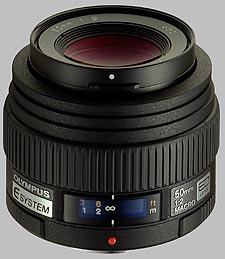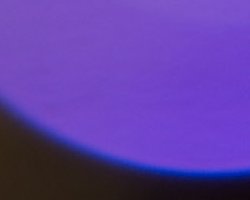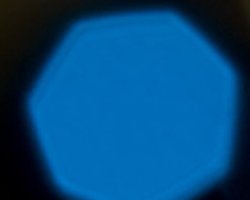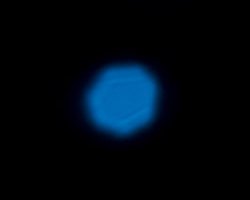| 50mm |
$529 average price |
|---|---|

|
|
Your purchases support this site
Buy the Olympus 50mm f/2 Zuiko Digital Macro
(From Olympus lens literature) This compact and affordable medium telephoto Zuiko Digital Lens is ideal for not only macro photography but also as a portrait lens. The high performance digital specific design includes an ED glass element for impressive color accuracy and offers a magnification of 1:2 (half life size), which has an image magnification size equivalent to life size (1:1) in a 35mm film photo. A large f/2 maximum aperture makes it excellent for lower-light photography as well.
Introduction
The Olympus lens lineup has two macro lenses: the 35mm and the 50mm. The 50mm ƒ/2 is listed in the ''High Quality'' lineup, developed for high performance in sharpness, brightness and close-up shooting capability. It's also listed as being dust and splash-proof, to allow usage in harsh conditions. Available for $425.
Since Olympus digital SLR cameras employ the four-thirds imaging sensor, any lens attached to the body will have an effective focal length (in 35mm terms) of double the listed length. Thus, for this particular lens, it will exhibit an effective focal length of 100mm. The lens takes 52mm filters, and comes with a bowl-style lens hood.
Sharpness
Looking at the blur graph, the lens is incredibly sharp: it barely surpasses one blur unit at ƒ/2, and by ƒ/4 it produces images as sharp as our scale can detect. This sharpness trend continues all the way to ƒ/16, where diffraction limiting starts to set in. By ƒ/22, the lens still produces fantastic results, registering just over 2 on our blur scale. Some lens owners would be content to see the kind of performance you see at ƒ/22 at more commonly used apertures such as ƒ/8. Overall, absolutely superb performance.
Chromatic Aberration
Some chromatic aberration is evident between ƒ/2 and ƒ/4, but it only ranks 3/100ths of a percent; still well-above average performance, and you'd really have to look very hard to find any evidence of chromatic aberration on most large prints.
Shading (''Vignetting'')
Our vignetting chart shows a quarter-stop of light fall-off in the corners when shooting the 50mm at ƒ/2, but I had a hard time finding any practical evidence of it. At other apertures, there is no statistically signficant shading.
Distortion
Because the lens is fixed at 50mm, the distortion is also fixed. The maximum distortion is 0.2% (in the corners) where the minimum is distortion less than 0.1%. You would be hard-pressed to even notice this level of distortion when taking photographs of straight lines, and if it was a crucial issue, the image could be corrected in post-processing.
Autofocus Operation
The 50mm ƒ/2 Zuiko is designed for macro work, and not quick autofocusing. Racking through its entire focus range in just over two seconds, it makes a substantial amount of noise, and the lens barrel extends to almost double its length in the process; this is not a subtle lens. With its fast ƒ/2 aperture, the 50mm macro performs excellently well in low-light.
Macro
With a close-focusing distance of just under 24 centimetres (9 1/2 inches) from the image sensor, the 50mm ƒ/2 focuses on objects literally millimetres away from the end of the lens. At this range the lens achieves 104% image magnification when considered in 35mm film terms. An extension tube (EX-25) is available which extends this maximum image magnification to 196% (in 35mm film terms).
Bokeh
 |
| 50mm, ƒ/2 |
 |
| 50mm, ƒ/8 |
 |
| 50mm, ƒ/22 |
Build Quality and Handling
The 50mm ƒ/2 weighs 300 grams (10.5 oz), making it a fairly hefty lens, but produces a comfortable balance to the overall camera package. It's put together well, with a combination of metal and plastic parts; the parts that see the most wear are metal, such as the filter ring and lens mount, while textured items such as the barrel and lens ring are a comfortable plastic. The focus ring turns with a silky smoothness, though it gets obscured when the lens hood is reversed for storage, making it obligatory to remove the hood for manual focus work (which you'll be doing with live view activated). As with all Olympus ''High Grade'' lenses there is a focus range display, and the lens hood looks to be particularly effective given its size. Oddly though, the less-expensive 35mm ƒ/3.5 offers a magnification scale embossed on the lens barrel, which the 50mm ƒ/2 lacks.
Alternatives
Olympus 35mm f/3.5 Zuiko Digital Macro ~$200
A slightly less expensive Olympus macro option, the 35mm gives the same excellent results for resistance to chromatic aberration, distortion and vignetting, but is slightly less sharp at smaller apertures (ƒ/16-22). The 35mm has a much higher magnification ratio, but the larger maximum aperture of the 50mm will bring in a lot more light.
Sigma 24mm f/1.8 EX DG Aspherical Macro ~$340
Available in the four-thirds mount, this lens offering from Sigma doesn't give you a comparable focal length, but it does offer a faster nine-bladed aperture. We haven't reviewed this lens as of the date of this review, but the one user review we have does praise its image quality, while commenting negatively on its large size and weight.
Sigma 105mm f/2.8 EX DG Macro ~$350
Another Sigma offering in the four-thirds camp, the 105mm f/2.8 uses an eight-bladed aperture, offering respectable sharpness results that match the Olympus 50mm from f/5.6 and up. Chromatic aberration, Distortion and Vignetting are excellently handled, and in macro use, the 150mm offers 1:1 magnification. It's a heavier lens though, weighing in at 457 grams (16 oz).
Sigma 150mm f/2.8 EX DG HSM APO Macro ~$540
The sharpness results for this lens tell the whole story; tack sharp almost all the way across from f/2.8 to f/22. Excellent results for chromatic aberration and distortion-free images; some slight vignetting at f/2.8. It's quite heavy for macro use at 895 grams (almost 32 oz) and you'll be mounting the lens on a tripod, but if you're in the market for a 300mm-equivalent macro lens, this is your option. Close-focusing to 38 cm (16 inches), the lens can achieve 1:1 magnification.
Conclusion
The question for many macro enthusiasts could be whether to buy this lens or the 35mm ƒ/3.5. Optically, the 50mm ƒ/2 is a real treat: images are tack-sharp all the way to ƒ/16, there's terrific resistance to chromatic aberration, distortion and vignetting, and you get a well-designed, hardy lens made with metal components where you'd need them. The fit and finish, as well as the excellent optical characteristics justify the price, but if you don't specifically need the 50mm focal length, the 35mm has a higher magnification rating and is just as good optically, so it is a much better value. That said, anyone who buys the 50mm won't be disappointed.
Sample Photos!
Sample photos are available of two laboratory test targets to help in our readers' evaluation of the lenses we test. The VFA target should give you a good idea of sharpness in the center and corners, as well as some idea of the extent of barrel or pincushion distortion and chromatic aberration, while the Still Life subject may help in judging contrast and color. We shoot both images using the default JPEG settings and manual white balance of our test bodies, so the images should be quite consistent from lens to lens.
As appropriate, we shoot these with both full-frame and sub-frame bodies, at a range of focal lengths, and at both maximum aperture and f/8. For the "VFA" target (the viewfinder accuracy target from Imaging Resource), we also provide sample crops from the center and upper-left corner of each shot, so you can quickly get a sense of relative sharpness, without having to download and inspect the full-res images. To avoid space limitations with the layout of our review pages, indexes to the test shots launch in separate windows.
To see the sample shots from this lens captured with this lens on our test body, just click on either of the thumbnails below, and scroll as needed in the window that appears.
Olympus 50mm f/2 Zuiko Digital Macro
Your purchases support this site
Four Thirds - Black
Olympus 50mm f/2 Zuiko Digital Macro User Reviews
-
Stunning opticallyNo focus limiter
Optically, this lens is stunning. You won't believe what you are getting out of it. I used it on many Olympus DSLR cameras, but it really shines on OM-D E-M1.
reviewed October 30th, 2016 (purchased for $365)
The only issue, for me, is the no limiter switch. It is extremely annoying wen lens get to hunt thru its entire (macro) range.
For macro use the lens is fantastic. I've done loads of macro, including using EX-25, and images are fantastic.
With old DSLR bodies there were always focusing issues, especially on non-pro bodies. On my E-1 lens does focus precisely, but on E-500, E-510 and E-450 it generally miss-focused.
The focus on OM-D E-M1 is very good. It is very fast in good light, but it does occasionally hunt in bad light on low-contrast focus points.
The lens is extremely sharp, but when I started using it for the first time on E-M1, I had a feeling I have a microscope, and not a camera, it is that sharp. E-M1 in general produce fantastic results with old pro grade lenses, but on 50mm results are stunning.
This is my most used lens, on any Olympus camera I had.
On E-M1 I use it wide open, almost exclusively.
Also - on E-1 this is really the only usable lens in not-ideal light. Everything else have too high F number. -
Image qualityAuto focus speed, Auto focus noise
The image quality of this lens is absurd. It's very good. It's very clean; it's very sharp; it's very contrasty.
reviewed May 31st, 2012 (purchased for $500)
It's a macro lens. By itself it can zoom in pretty close. I don't have any of the teleconverters or extension tubes, but from what I've read it seems that they really expand the utility of this lens's macro function.
I usually use this for product photography. It's focal length is good for this. It's also a good focal length for adult portraiture. Children are fidgety, and one of the definite weaknesses of this lens is its auto focus speed. It's just not that fast. So unless your child has been tranquilized, it might be tough to get a shot of them.
It's also very noisy, so forget about candid shots of cats. They become very suspicious.
Wide open shots display very nice bokeh. -
Very good image qualityA/F is bit slow some time
Image quality is excellent ,i use this lens with e3
reviewed January 10th, 2010 -
As above review by SLR Gear.It is slow to autofocus, but one has to understand it was designed for macro, where manual focus is the way to go. However, I would have preferred a focus ring like the old film lenses, or even like the digital Olympus 12-60mm lens.
Superlative lens, I agree that it is a must have.
reviewed October 6th, 2009
Lightweight too, and on the Olympus E-P1 is a fabulous treat. Can't wait now for the E-P2. -
Best lens tested by Slrgear, crystalline sharpness at every aperture, weather resistanceNon-SWD focusing motor
Analyzing various camera makers lens lines (before choosing Olympus) I found the ZD 50mm f/2 possessed the highest IQ of any lens tested by Slrgear, Dpreview, and Popphoto.
reviewed May 8th, 2009 (purchased for $365) -
Small, lightweight, extremly sharpnone
I have the lens now for 5 days. In terms of sharpness, this is the best lens I've ever seen so far. Or at least as good as my Minolta 35/2.0
reviewed March 2nd, 2009 (purchased for $325)
Well built, light, small. You can carry it with you in the pouch of your jacket.
Well worth the money.
In comparison to the Minolta 35/2 were the prices are around 800 USD, this one here is a bargain ;)
If you find it at a reasonable price, get it! -
Very sharp even at f/2, great macro performance, weatherproofSlow, noisy, imprecise, unrefined AF
With SWD AF would be the best lens in the world.
reviewed February 23rd, 2009 (purchased for $500) -
Super sharp, Versatile and weather proof.Slow sometimes difficult to focus.
I really like this lens. It is crispy sharp even with the macro tube, and at all apertures. The color cast is neutral and it can be used for almost anything where a 100mm EFL slow focus prime lens is an appropriate choice.
reviewed December 22nd, 2008 (purchased for $500)
However the focus is slow and sometimes imprecise. Often you have to "feather" the shutter to get a clean focus and sometimes it misses the focus point completely.
However, if you invest enough time to get to know this lens, it will produce the best pictures that a given 4/3 camera can produce. -
Lightweight, extremely sharp, optically fastMacro lenses tend to focus a little slower
An excellent replacement for my old Zuiko 90mm f/2 Macro. Not quite as sharp or contrasty, IMO, but still a very good optic at an exceptionally fair price.
reviewed June 22nd, 2008 (purchased for $402) -
Incredibly sharp, good bokeh, quite fastslightly expensive
How about to shoot some portraits in available light? Well, here's the right tool to do the job! Great sharpness, impeccable color rendition, good bokeh - what else could you expect?
reviewed April 3rd, 2008 (purchased for $930) -
fast lense, very sharp, very good contrastslow AF, no focus range limiter
An excellent lens, not only as Macro, but also very good as moderate tele and as portrait lens.
reviewed January 23rd, 2008
Combination with EC-20 works as an excellent 4/100 Telemakro up to 1:1.
Highly recommended! -
sharpnes, size
I have been owning this lens for 2 years now. But honestly, I have rarely taken it out of drawer. Reason? Major focus issues I have had...It was so impractical to use with my E-1... It was slow and hunting there and back and again...maybe you know it. Great for macros, great for portraits but only if there was enough of light for AF to capture itself somewhere. Otherwise it was more pain than gain.
reviewed December 22nd, 2007 (purchased for $900)
What a change with E-3! I have already mentioned this in 14-54mm f2.8-35 review. The AF speed maybe tripled and it focuses correctly in 99% cases even in very hard light conditions. And this completely changes the whole story and my impression about this lens. If I have found it a bit freaky to have it with E-1, now, I say it is 'must have' with E-3. The performance is just amazing in all aspects and I can finally enjoy its unique quality.
I am not making any special comments on IQ. The charts, ratings and reviews of other are clear and speaking for itself. -
Sharpness, f2 performancenone, but might hunt for some, but not me :)
Use as a Portrait lens (not macro) but have shot Landscape with it, and because of it's small size, use it as an everyday lens too. Nothing beats having f2 with you always. You can keep the e510 and 50m in a small LowePro Mini bag with you always.
reviewed December 5th, 2007 (purchased for $500)
Only bad thing about that is no zoom and no wide so you need a little space and some shutter speed at efl 100mm ... or a e510/E3 with IS.
Shot thousands of shots with both the e500 and e510 with it ... and imho the e510 IS with the 50mm f2 combo is noticably "Better"! and with the e510 I have NOT hunted "at all" period.
p.s. when it starts to hunt ... get off the shutter release button, fast! and then shoot for high contrast using "only" the center Cross focus point.
* Oh, I forgot the most important thing ... the IQ .. WOW the sharpness is the first thing you will notice ... but there is something more there, you will see it , you will notice it , and you will shoot f2 , f2.8 often lol. And you will Love it! -
This lens is small and lightweight. Great Bokeh!!!Hunts for focus in close.
This is a great lens to add to your Zuiko collection.
reviewed January 2nd, 2007 (purchased for $419)
This lens has very good defocussing (Bokeh) qualities. -
good lens but a little noisy
reviewed January 1st, 2007 -
image quality, light weightslow macro focus, bayonet attachment
A wonderful portrait/macro combo! This fills the role of my OM Zuiko 90/2, my favorite film lens, but at a third of the weight and size.
reviewed October 25th, 2005 (purchased for $639)
The bayonet hood/filter attachment is non-standard, and using the E twinlight or ringlight requires an expensive attachment. -
fast prime (F2), very sharp, and good contrastnone
This macro lens is also a great portrait lens. In fact is a great lens for any kind of shoot. I use this lens in doors in poor light conditions with wonderful results. Coupled with the E-1's great auto white balance this lens is great in low, indoor light situations.
reviewed October 23rd, 2005





